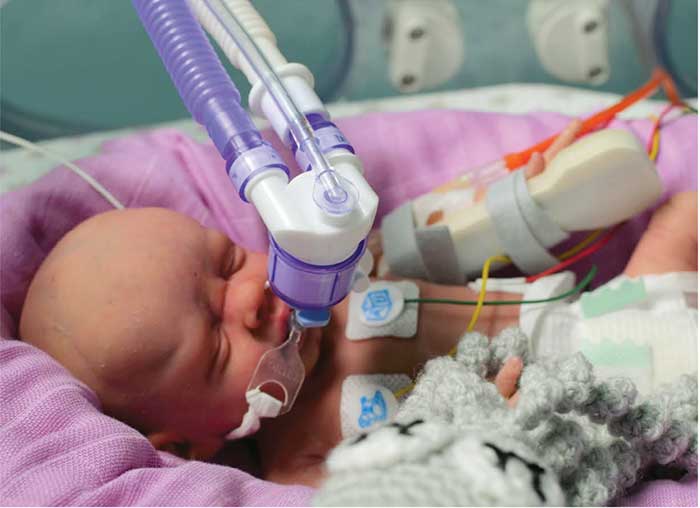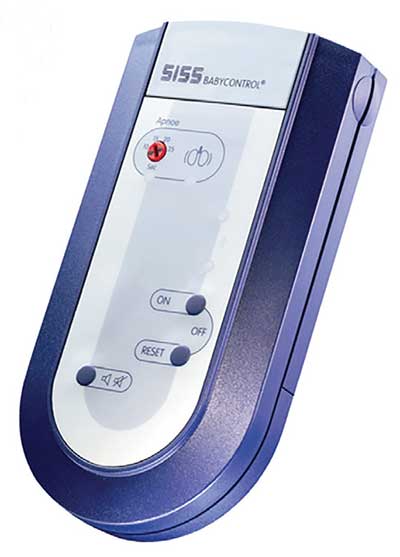Respiration: a guide to the latest equipment
Neonatal respiratory conditions are one of the most common reasons for admission to a neonatal unit. In this issue of Infant we look at recent innovations in medical equipment to support newborn respiration.
Little things make a big difference with NeoFlow VT
The NeoFlow VT from Armstrong Medical is an advanced ventilator circuit that intuitively manages moisture throughout the system to prevent rainout. Vapour transmission (VT) technology in the expiratory limb uses a combination of polymers and production techniques to create a layered structure that allows moisture vapour to escape, with no loss of gas volume from the circuit. The system reaches optimum therapy quickly and maintains it consistently, allowing healthcare professionals to focus on the patient and not the circuit.
The NeoFlow VT features a swivel Y-piece with three-point rotation, which has been developed with the baby’s comfort and ease of use in mind. It enables smooth movement when maintaining a fixed tracheal tube, allowing gentle repositioning of the infant with minimal torque on the tracheal tube. Circuit limbs can be independently repositioned to reduce the risk of disconnection and rotational force is transferred to the inspiratory and expiratory limb making skin-to-skin time more accessible.
The NeoFlow range, which includes medical equipment and circuits, uses Biocote antimicrobial protection as standard. The silver additive limits the number of microbes on surfaces, preventing microbial colonisation. The entire range has been designed to allow simple and easy transition between therapies.
The little things unique to the Neoflow VT circuit make a big difference when delivering respiratory care.

The swivel Y-piece of the NeoFlow VT.
Apnoea monitors can contribute to improved outcomes for babies and reduced concern for parents
Available from Central Medical Supplies, the SISS Babycontrol is an apnoea monitor for newborn infants that monitors respiratory function when stationary and mobile. The monitor notifies of threatening respiratory pauses with both an acoustic and visual alarm.
The alarm priority can be ascertained with a colour-coded display.
A reusable body sensor is placed on the child’s abdominal wall and records respiratory movements. Times, types and frequencies of alarms are held in the integrated storage and can be transferred to a PC.

The SISS Babycontrol apnoea monitor.
EIT guides personalised respiratory support
Electrical impedance tomography (EIT) permits continuous lung-aeration monitoring to guide effective respiratory support. It can be used as a tool to visualise regional patterns of mechanical ventilation and to detect changes in the distribution of ventilation. Sentec’s EIT LuMon System offers real-time non-invasive monitoring of patient respiration at the bedside.
The soft and gentle LuMon sensor belt wraps around the newborn’s chest. Its embedded electrodes connect to the LuMon monitor, providing a radiation-free technology to help clinicians make well-informed and personalised decisions.

Sentec’s EIT LuMon monitor.
Or read this article in our
Tablet/iPad edition


